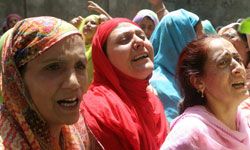Key Takeaways
- Muslim funeral traditions emphasize simplicity, dignity and respect for the deceased.
- Key rituals include prompt burial, washing and shrouding the body and offering funeral prayers.
- These customs reflect Islamic beliefs about death, the afterlife and the importance of community support during mourning.
Coping with the loss of a friend or family member is difficult, no matter what your faith. All religions have funeral rites and traditions for dealing with death, and Islam is no different.
With Osama bin Laden's recent death and burial at sea, there's been a lot of speculation about Muslim funeral traditions. Muslims have a pretty clear set of rules when it comes to preparing the dead for burial and for the funeral itself.
Advertisement
Not only are there Muslim funeral traditions, but there are rituals and recommendations for Muslims close to a person who is dying, like saying positive things, making sure that he feels safe and is never alone, and gently encouraging the dying person to accept Allah and say the Shahaadah (a declaration of faith).
Muslims believe in similar constructs to heaven and hell, referred to as Jannah (paradise or heaven) and Jahannam (hell). Many Muslims believe that by accepting Islam, even just before death, and saying the Shahaadah, the dying person will go to Jannah after death.
So, what are the Muslim traditions for a funeral and burial? The rituals begin just after death.




